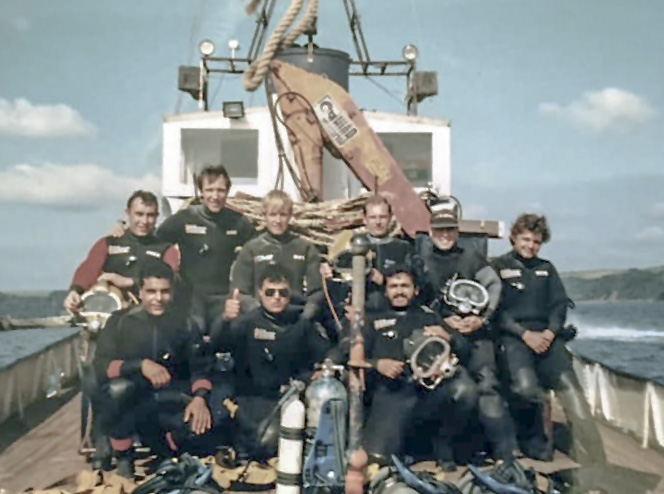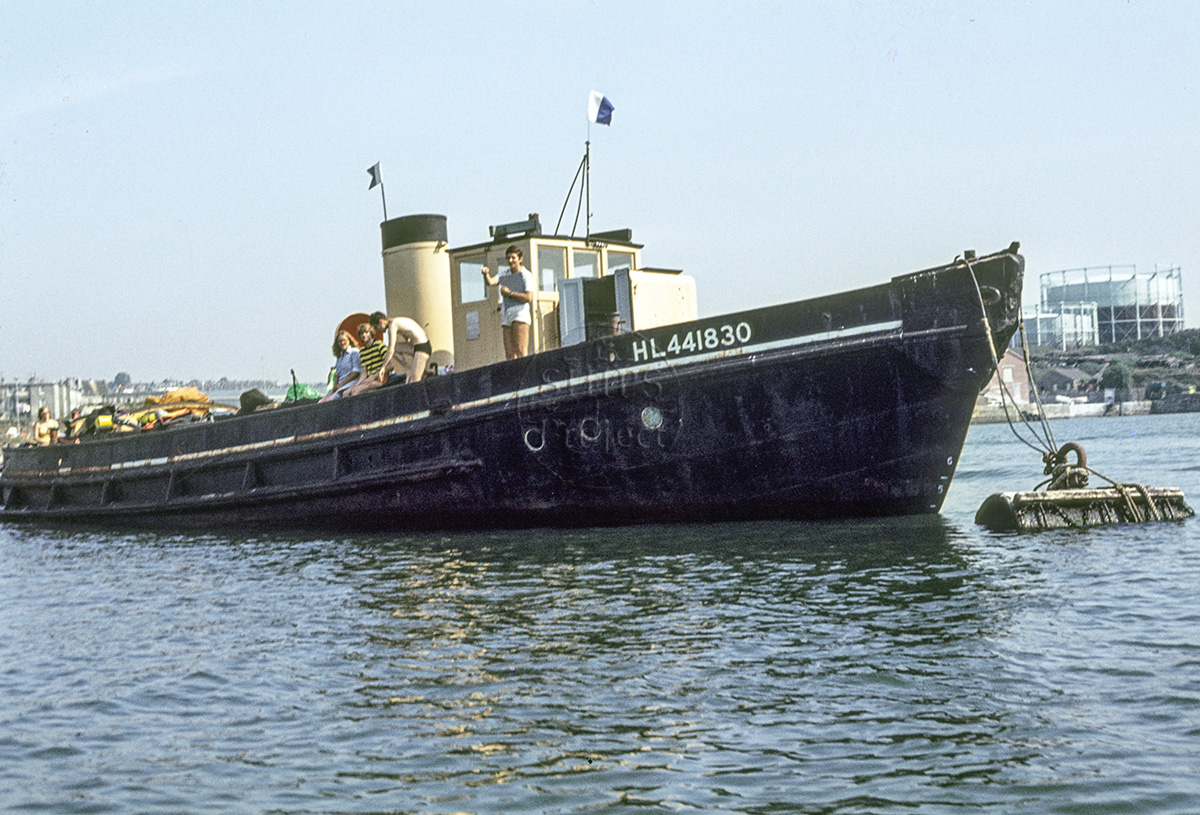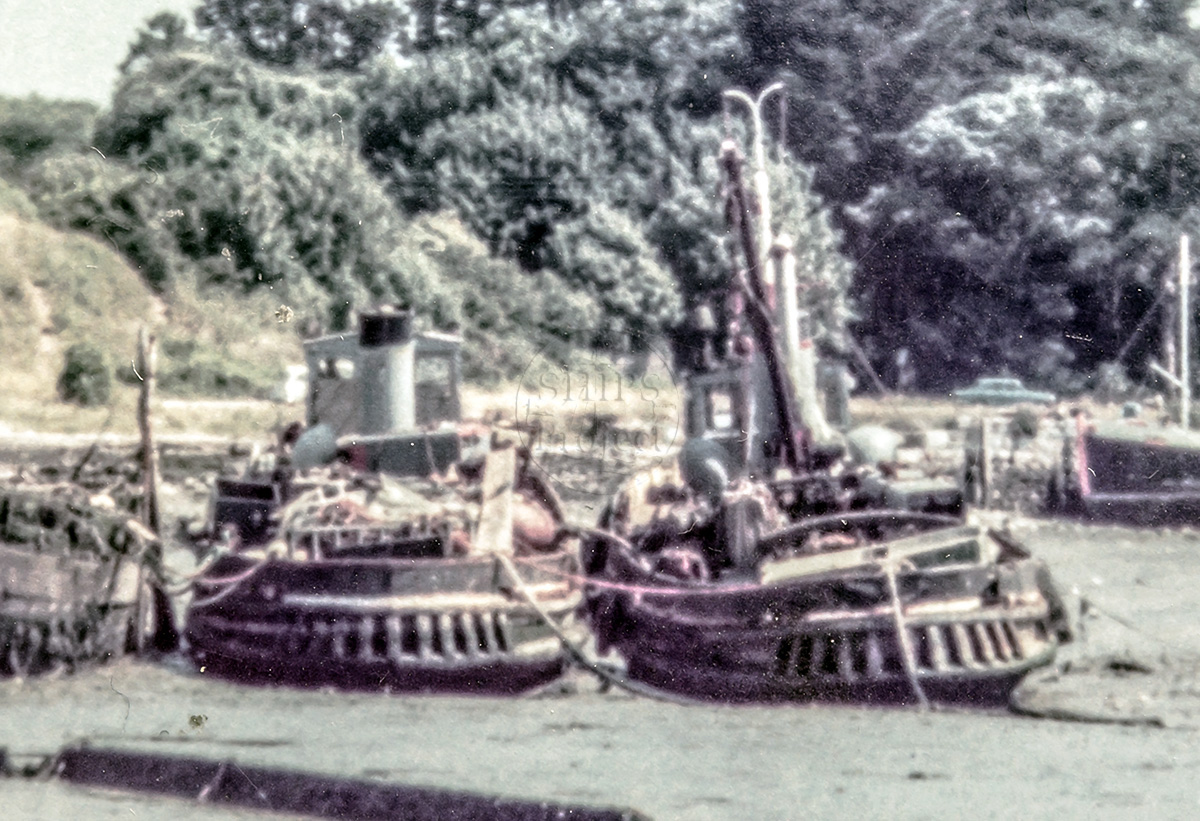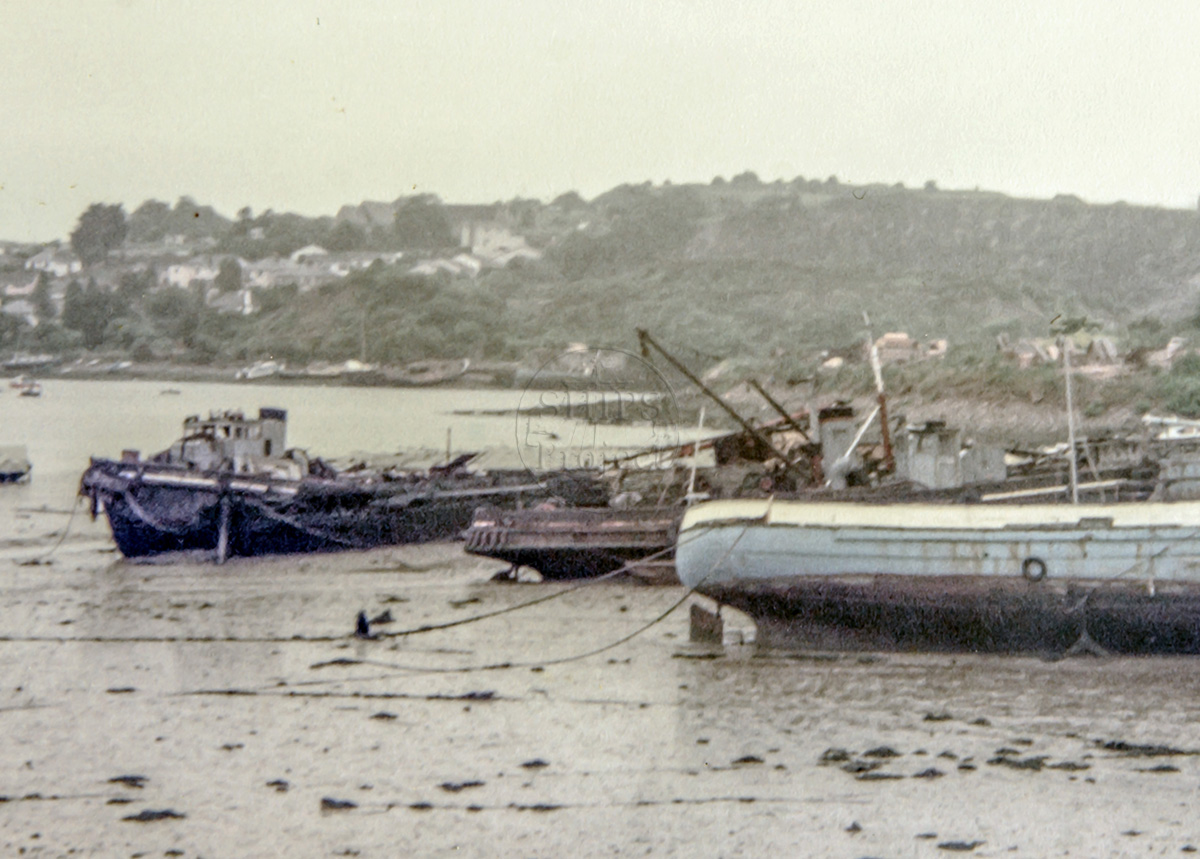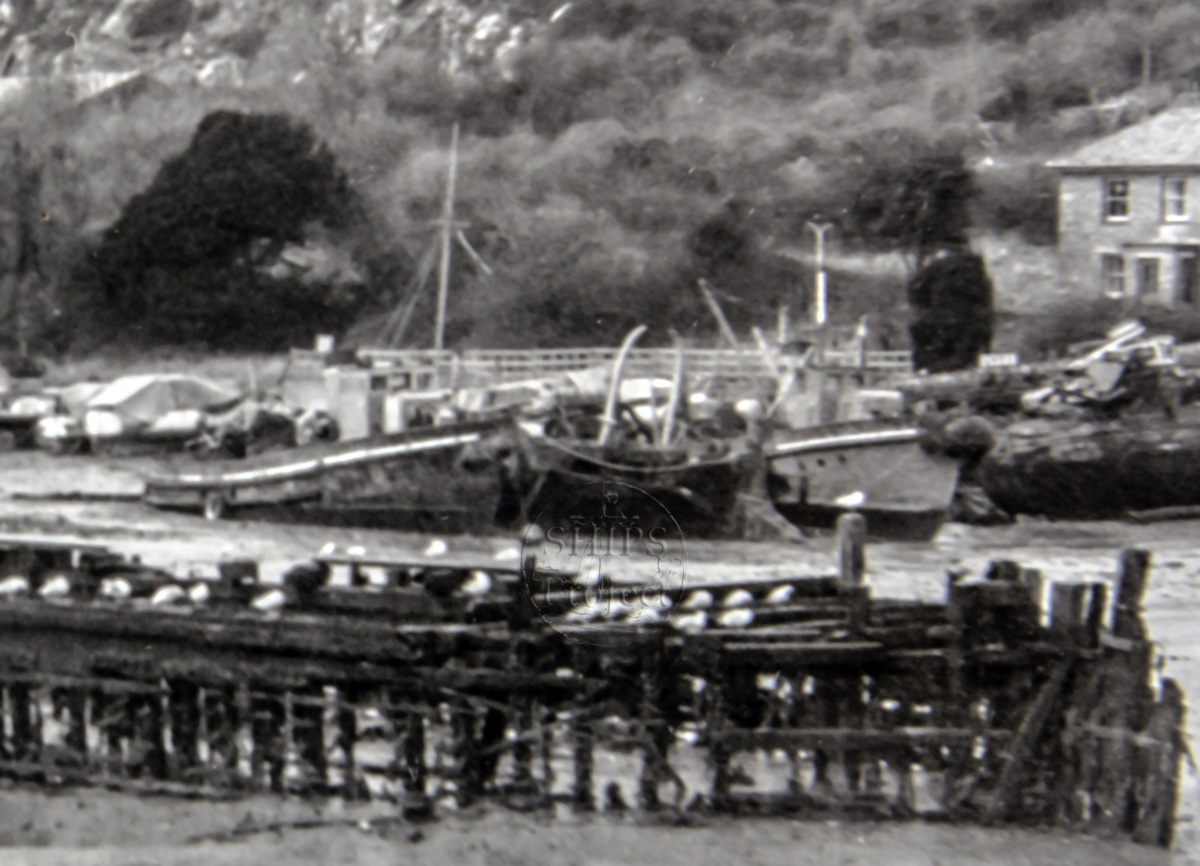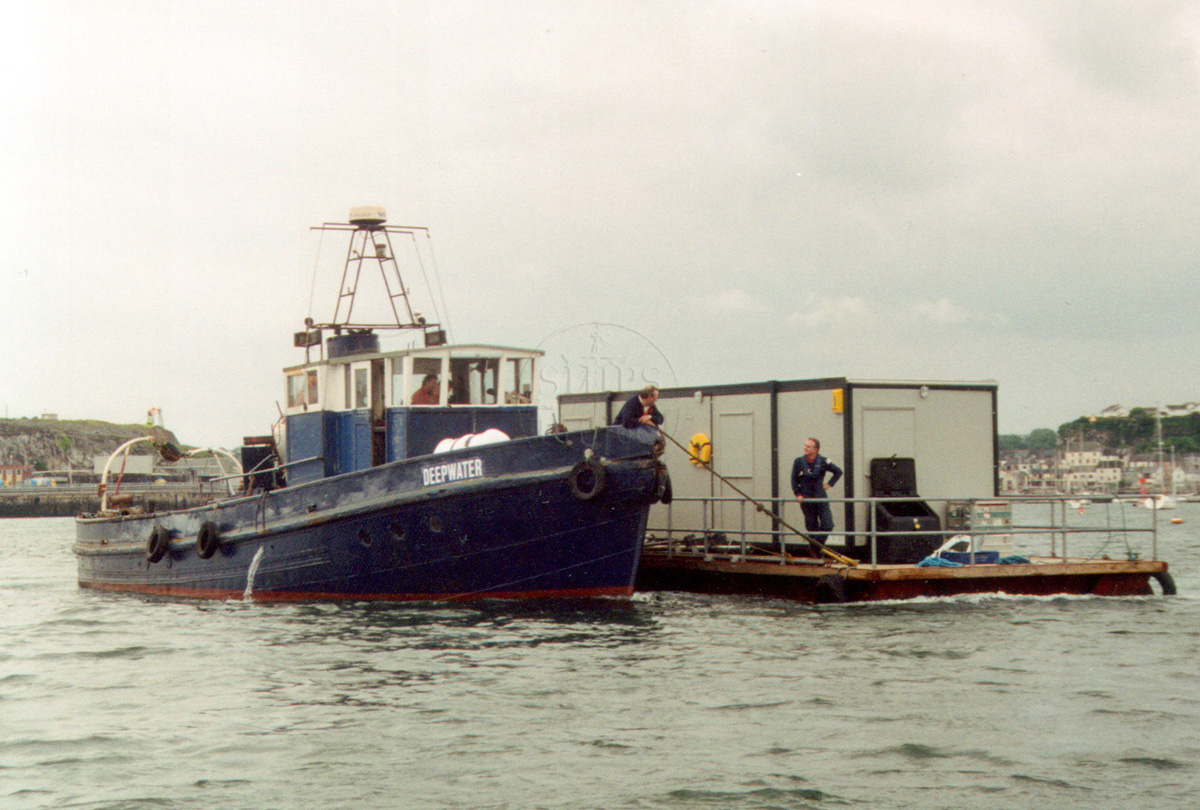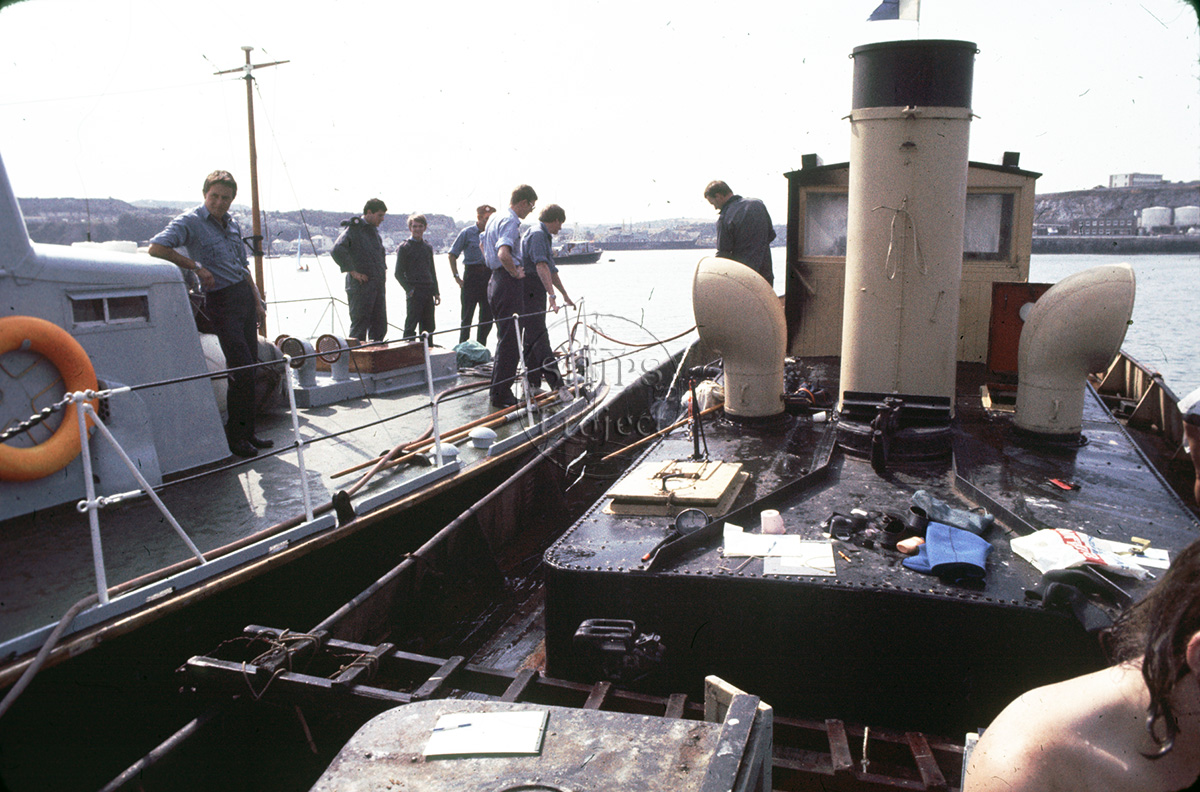Not Set
Two harbour launches which were scrapped for parts in Hooe Lake.
Type
60ft steel harbour launches
History
Four Admiralty 60ft harbour launches were bought by the diver training company POP Fort Bovisand around 1977. Three of the vessels are named HL441827, HL441828 and HL441830, one was the D22 or Canute and operated out of HMS Vernon. The only one we have information for is HL441827, she was ordered in 1944, completed in 1947, sent to Chatham Naval Dockyard for use in 'basin duties', transferred to Deptford in 1958 and had her engine replaced. In 1961 she was sent to Devonport Naval Dockyard and was sold out of service in December 1977.
One of the four vessels was named Deepwater and was used for commercial diver training and occasionally as a tug, see photo 5. Her sister ship Firewater was used for navigation training and for taking sports divers to dive sites in the area. Firewater was used as a dive platform during the investigations of the Cattewater wreck ![]() , see photo 1 and 6.
, see photo 1 and 6.
The two other launches were moored in Hooe Lake and were stripped for parts, see photos 2, 3 and 4. The launches were moored near the stone jetty on the north side of the Lake, alongside the barge Bertie ![]() and the schooner John Sims
and the schooner John Sims ![]() .
.
Firewater eventually sank during a storm at her mooring off Turnchapel Point, she had her funnel removed, was was stripped of useful parts and was abandoned where she lay. Deepwater was sold to John Boston of Oreston who then sold her on, and her whereabouts are unknown.
Description
Nothing remains of the two harbour launches that were scrapped in Hooe Lake. Plenty of debris is scattered on the mud where they lay, but this may have come from the many other vessels scrapped in the same place.
These vessels were mapped but not mentioned in the book Lost Ships of the West Country by Langley & Small.
Location and Access
Hooe Lake, Oreston, Plymouth
From Oreston, take the Lower Saltram road off Plymstock Road then turn right into Kingfisher Way. Follow the road down to the lake and there is a car park at the end; the stone jetty is easily visible on the north shore. The foreshore is firm but further out is deep mud so appropriate footwear and knowledge of the tide is needed.
Nearby hulks include the lighter Arthur ![]() , the Thames barge Bertie
, the Thames barge Bertie ![]() and the schooner John Sims
and the schooner John Sims ![]() .
.
Last updated 03 Jan 2021
Information
Date Built:
1947
Type:
60ft steel harbour launch
Builder:
Hugh McLean & Sons Limited, Kings Inch Road, Renfrew
Official Number:
HL441827, HL441828, HL441830 plus one other
Length
60ft
Beam
15ft
Depth in Hold
6.1ft
Construction
Timber, carvel
Propulsion
Diesel, National Gas Type RAM5 then Crossby HRN 3 then Gardner 8L3, speed 10kt
Displacement
6.6.tons
Portmarks
None
Outcome
Abandoned 1977?, broken up
Reference
Unknown
POP Fort Bovisand
Fort Bovisand was the home of commercial and recreational diving in the UK. In 1969, Jim Gill and Alan Bax formed the School for Nautical Archaeology Plymouth (SNAP) to teach weekend courses in maritime archaeology at the Royal Citadel in Plymouth. They formed Plymouth Ocean Projects Ltd. in 1970 and took out a lease on the run-down Palmerston Fort at Bovisand on the east side of Plymouth Sound. The first diver training course was held in July 1970 when just one room in the fort was useable as a classroom. The refurbishment continued throughout the fort buildings and included classrooms, projection room, darkroom, dive ship, hire centre, workshop, repair, accommodation, conference, bar and restaurant facilities, then known as the Fort Bovisand Underwater Centre.
Not Set
Leave a message
Your email address will not be published.
Click the images for a larger version
Image use policy
Our images can be used under a CC attribution non-commercial licence (unless stated otherwise).


